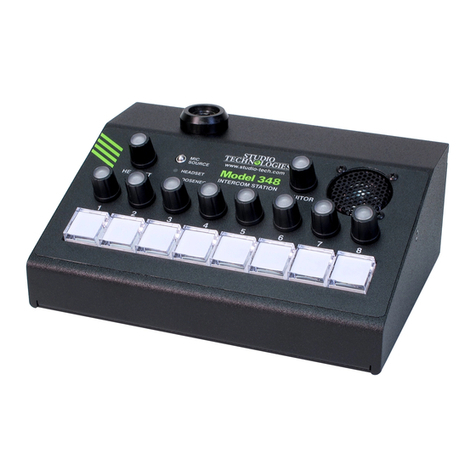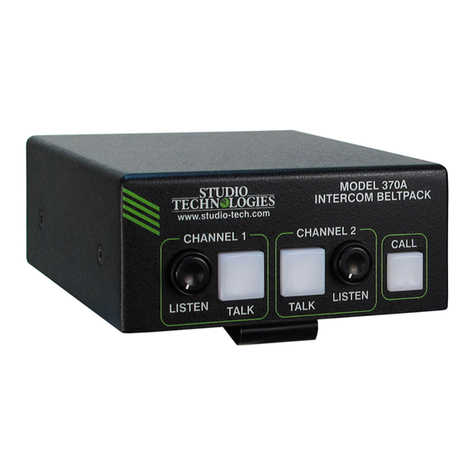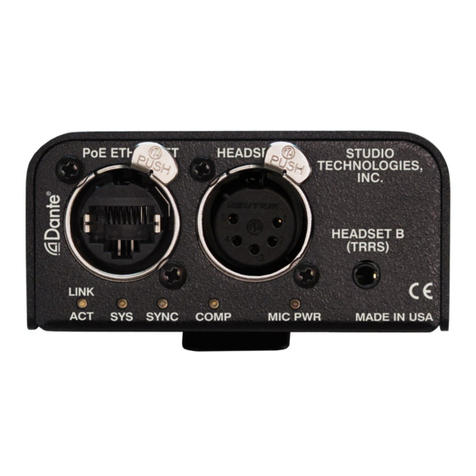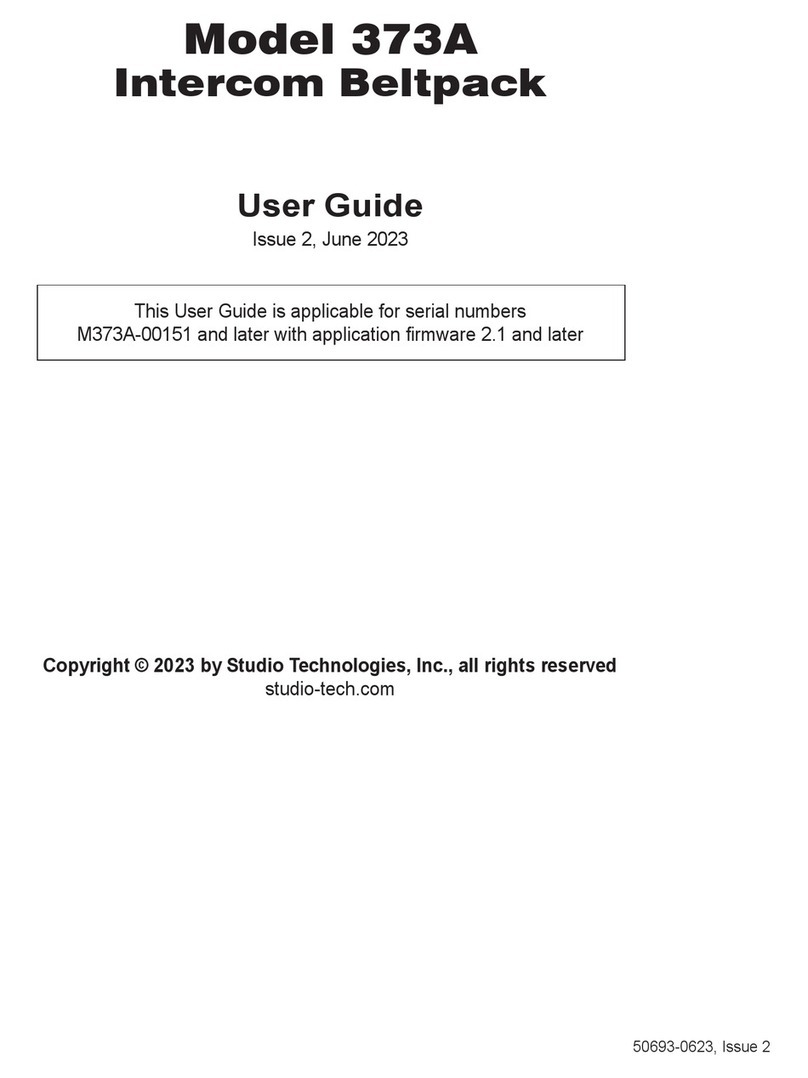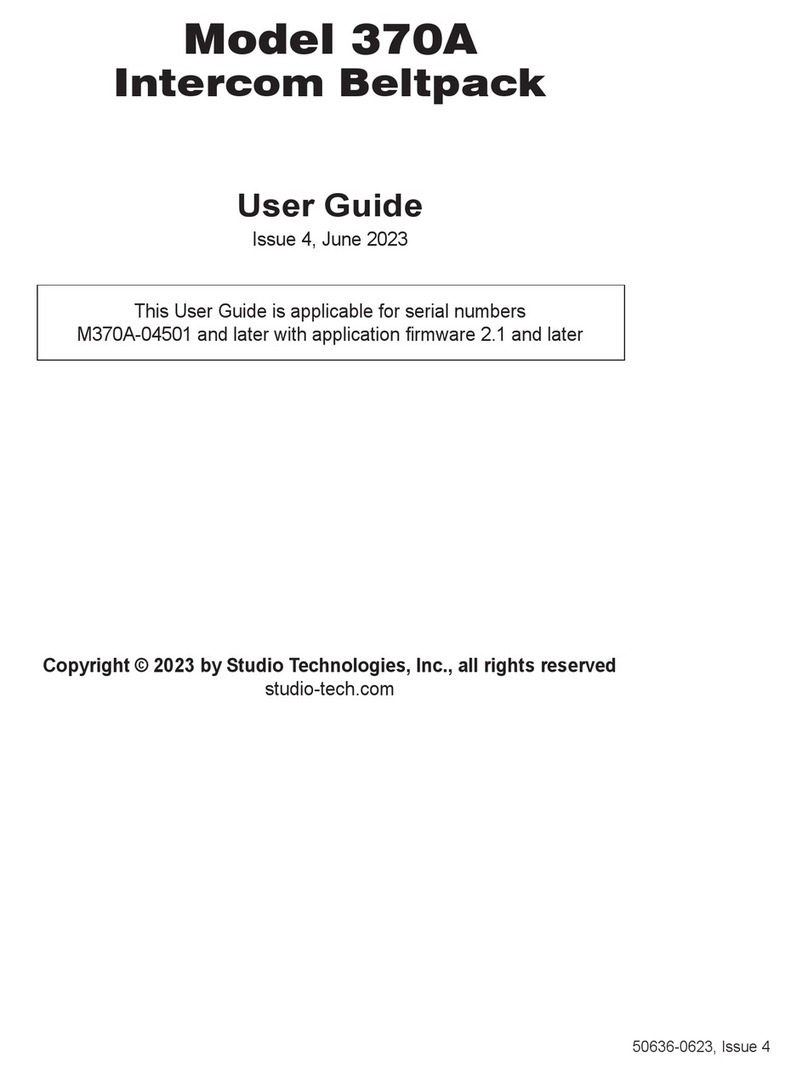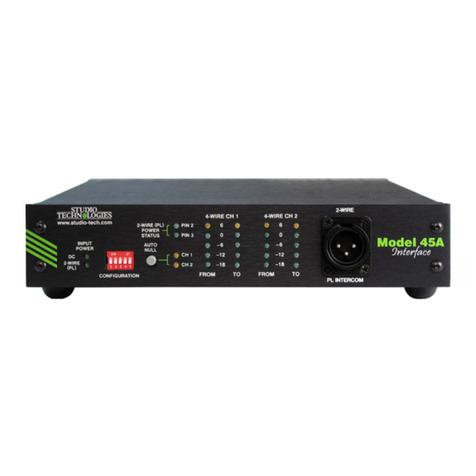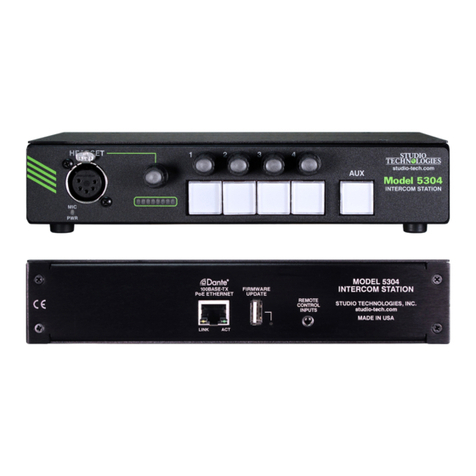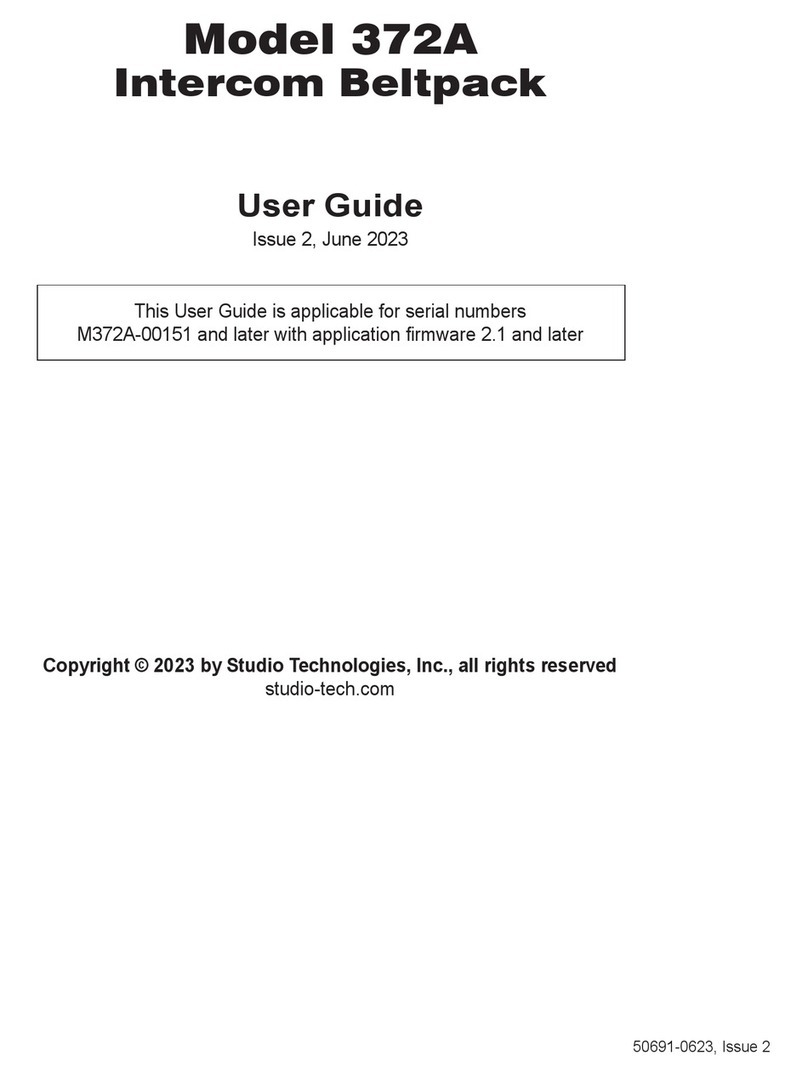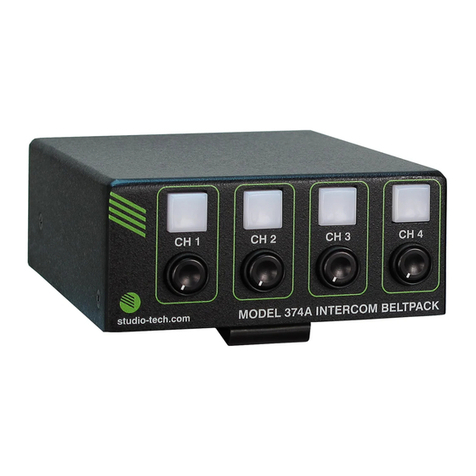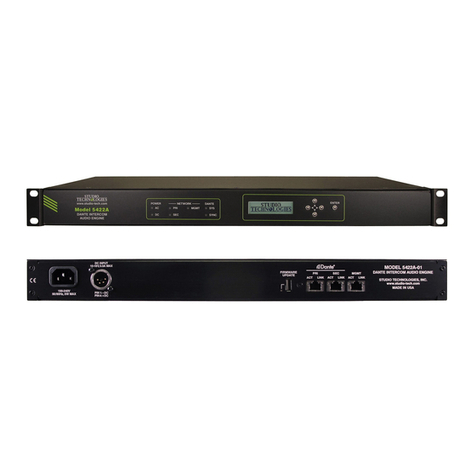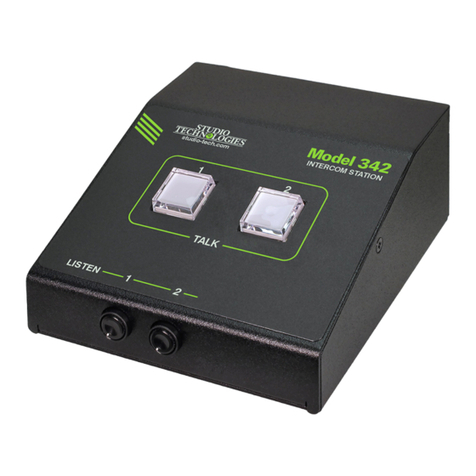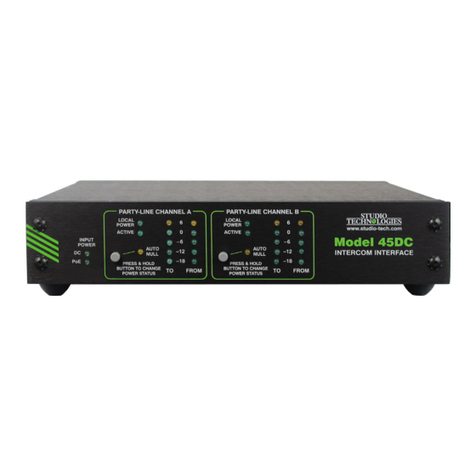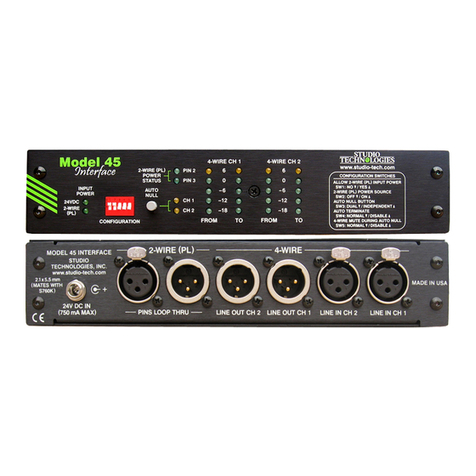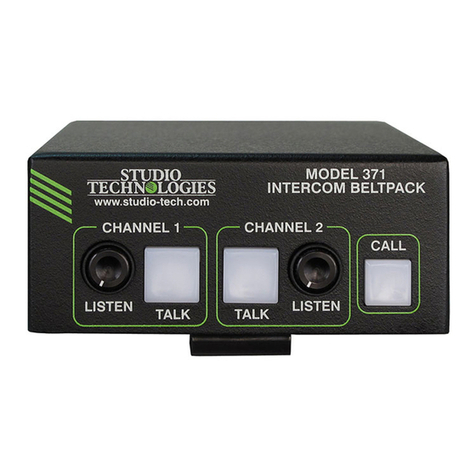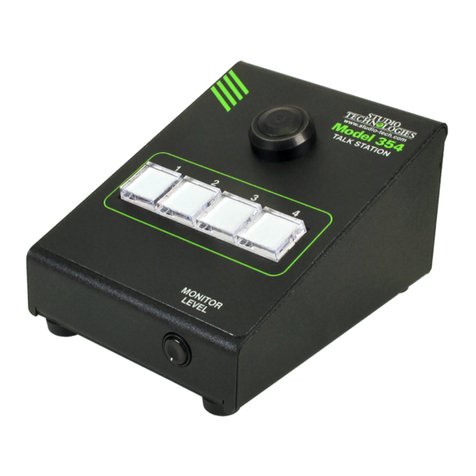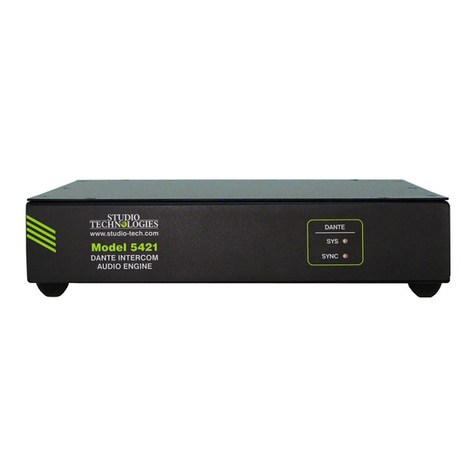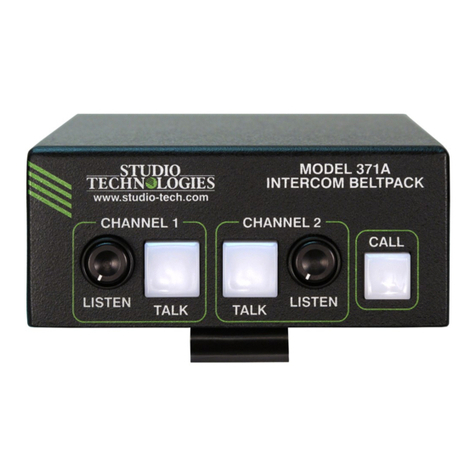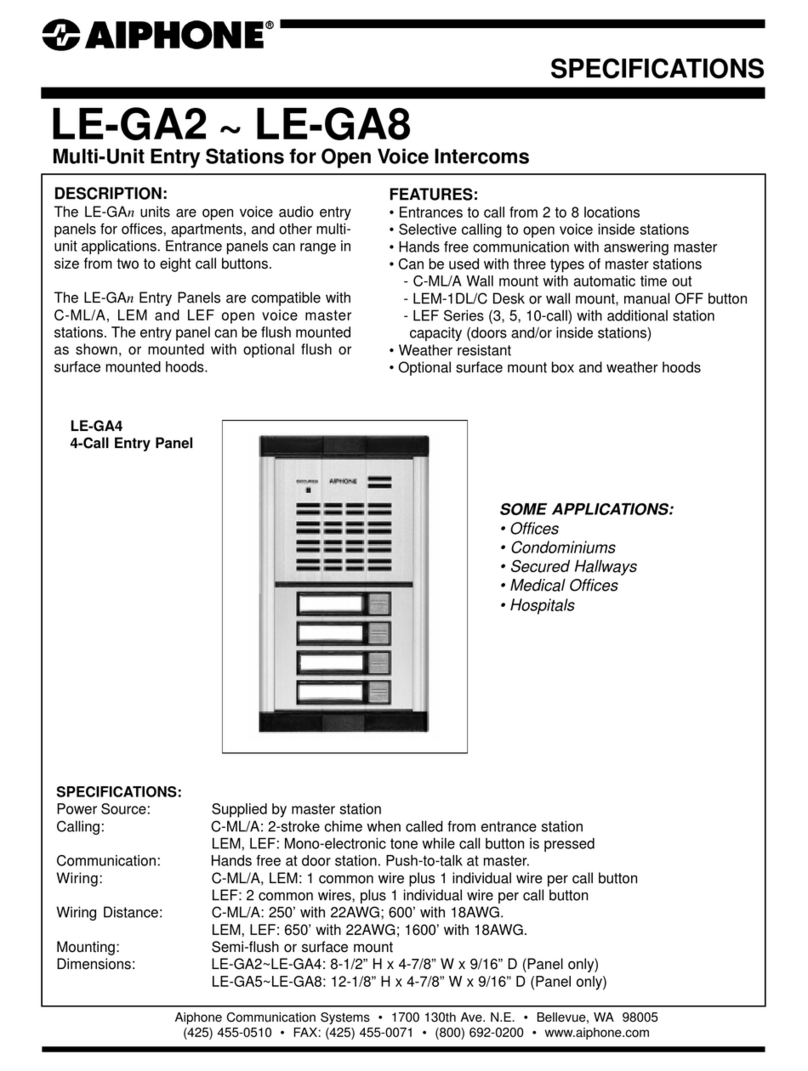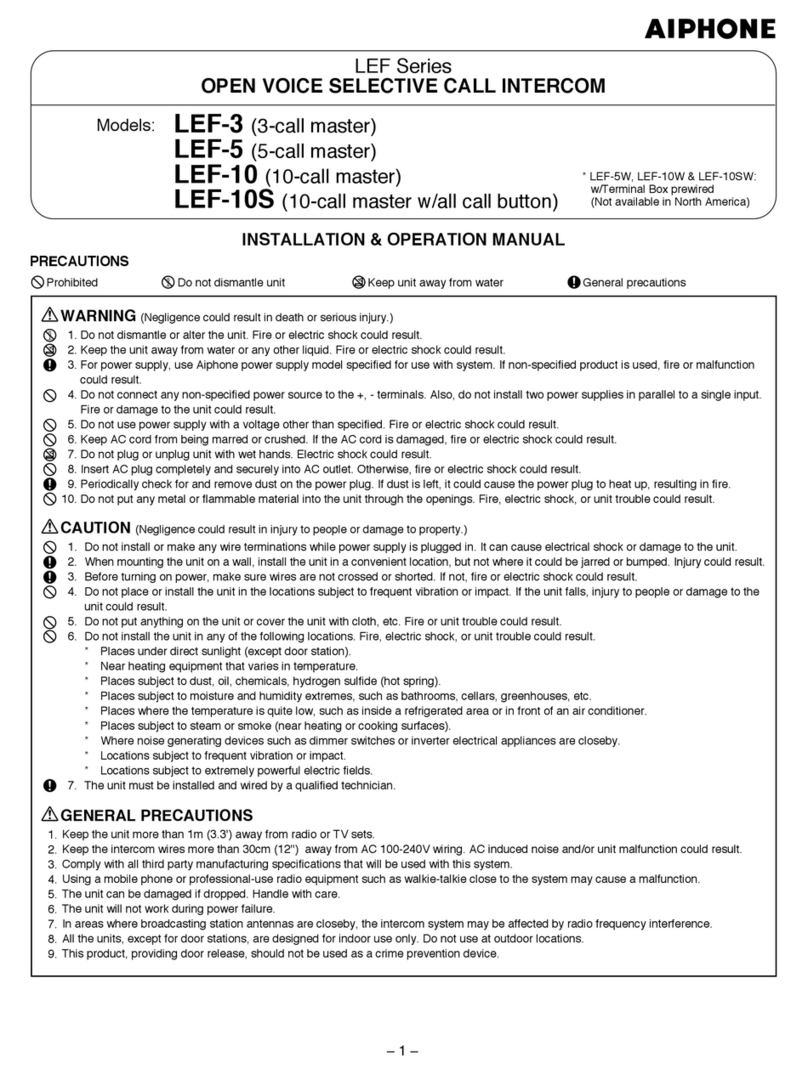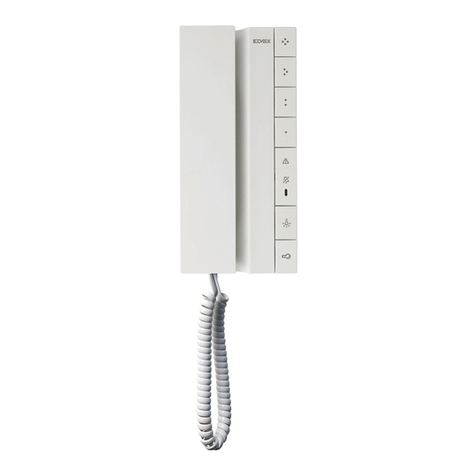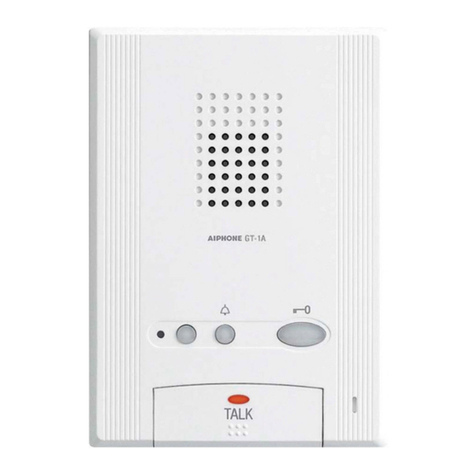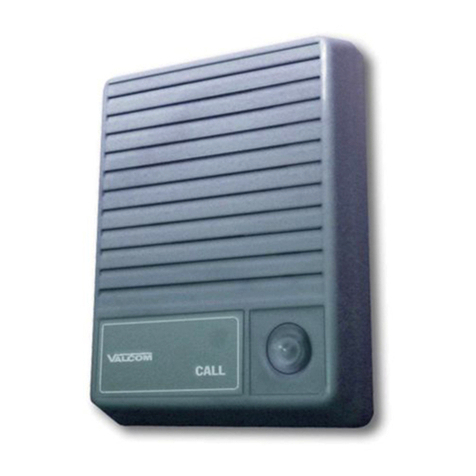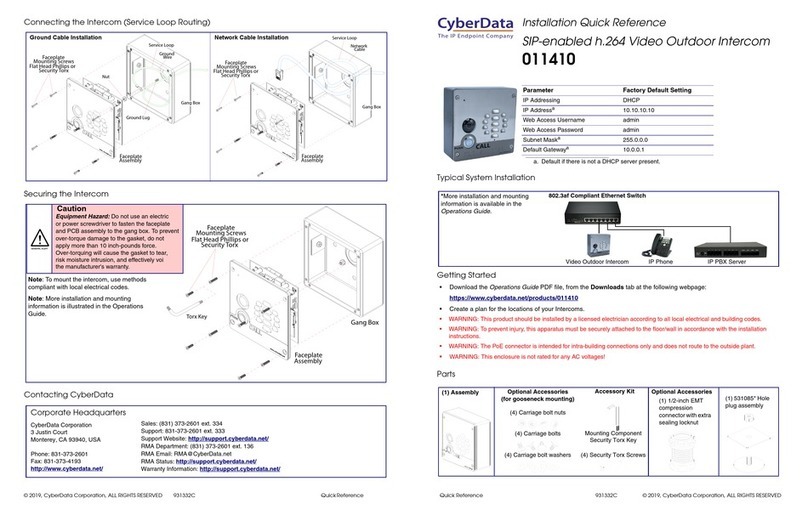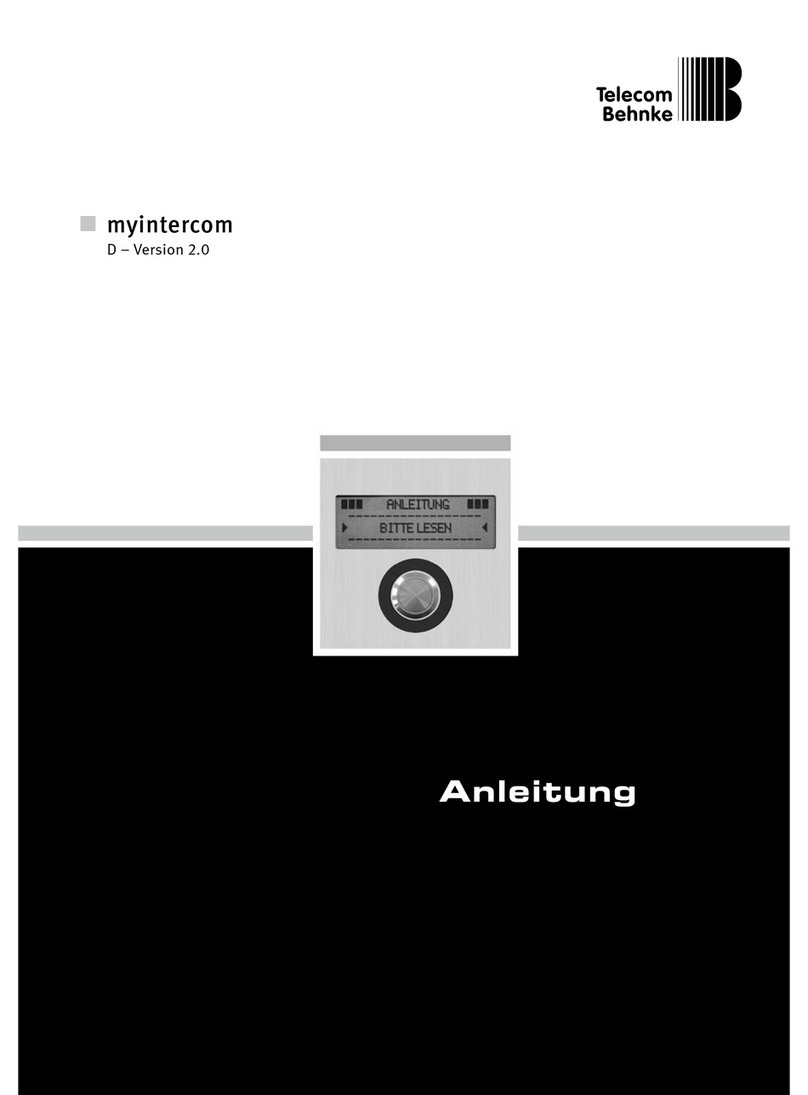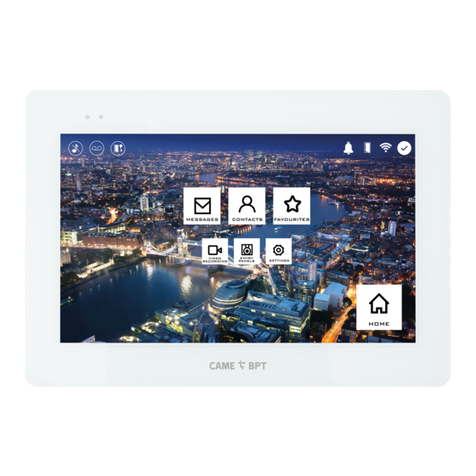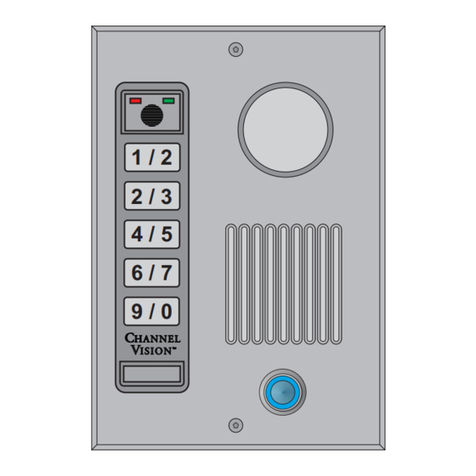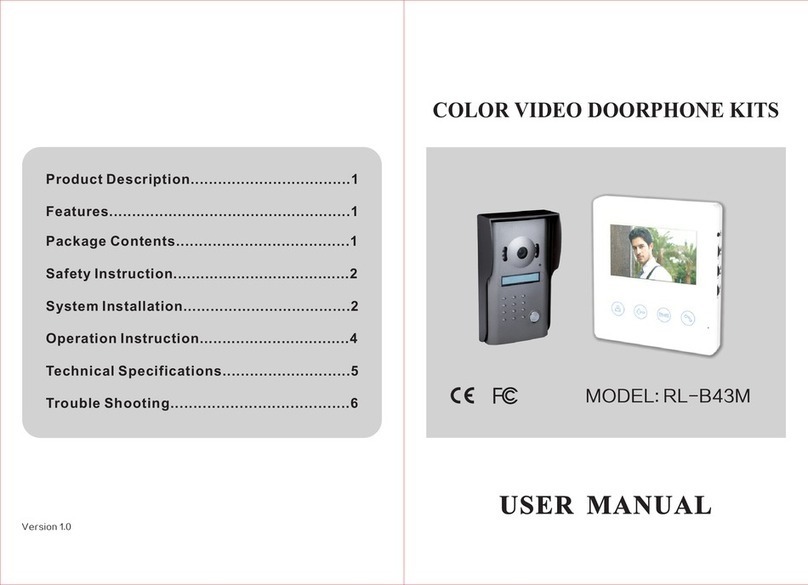
Model 370 User Guide Issue 3, May 2017
Studio Technologies, Inc. Page 13
the bottom panel, will slowly flash green.
After a few seconds the LED identification
patterns will cease and normal Model 370
button LED and Dante SYS and SYNC
status LED operation will resume.
The identify command also causes a talk
off (“mic kill”) function to activate. If either
or both talk on/off buttons are configured
to the push to talk/tap to latch mode, and
they are latched on, the identify command
will cause them to latch off. This allows
talk channels on a specific Model 370
that have been accidentally enabled to
be remotely turned off. A subtle but inter-
esting action will also occur if the identify
command is received when the Model 370
is in a specific configuration and talk op-
eration is active. If either or both of the talk
buttons have been configured for push to
talk operation and either or both buttons
are pressed to enable talk, when the iden-
tify command is received the microphone
audio will be muted for approximately one
second. This is implemented to allow tech-
nical personnel to use the identify com-
mand to locate a specific Model 370 that
might have had one or both of its buttons
accidentally activated.
For example, if a Model 370 was removed
from a user’s belt or other clothing and
then pushed into the corner of a table or
studio set it’s possible that either or both
talk buttons could become depressed.
The identify command would cause the
audio path on that specific unit to be
momentarily disabled, providing an aural
“clue” as to which unit is in an unwanted
state and helping guide personnel to iden-
tify its location. This feature only disturbs
the audio path for a brief interval, ensuring
that a valid talk condition won’t be unduly
impacted.
Listen Level
Two rotary level controls (“pots”), located
on the Model 370’s top panel, allow ad-
justment of the level of the two audio input
signals as they are sent to the headphone
outputs. Depending on the configuration
of the unit, audio input 1 can be sent to
the left headphone output or to both the
left and right headphone outputs; audio
input 2 can be sent to the right head-
phone output or to both the left and right
headphone outputs. The pots are “push-
in/push-out” type which allows the associ-
ated knobs to be in their “out” positions to
be adjusted and their “in” positions when
protection from changes is desired.
The headphone output audio quality
should be excellent, with high maximum
output level and low distortion. High-
frequency audio content is limited above
10 kHz, preventing unwanted signals from
reaching the transducers of the associated
headset. Analog audio signals do not pass
directly through the rotary level controls.
The position of the pots is recognized by
the Model 370’s processor which then ad-
justs the signal level in the digital domain.
When a pot is in its fully counterclockwise
position the associated audio signal is
fully muted. The on/off status of the talk
channels, or the status of the call function,
does not impact the headphone outputs.
They are independent functions.
Compressor Active LED
A yellow LED indicator is located on the
bottom panel adjacent to the headset con-
nector. Labeled COMP, the LED displays
the status of the microphone audio com-
pressor function. It will light whenever the
input level from the microphone is such
that the dynamic range of the talk signal



















